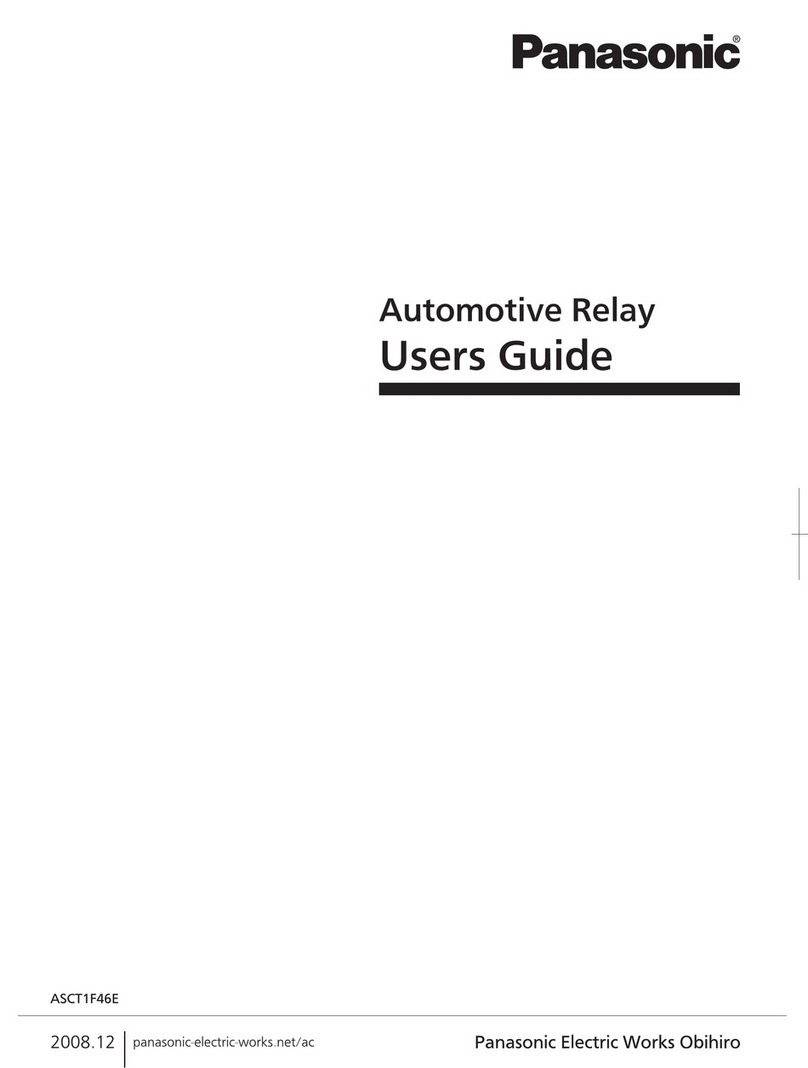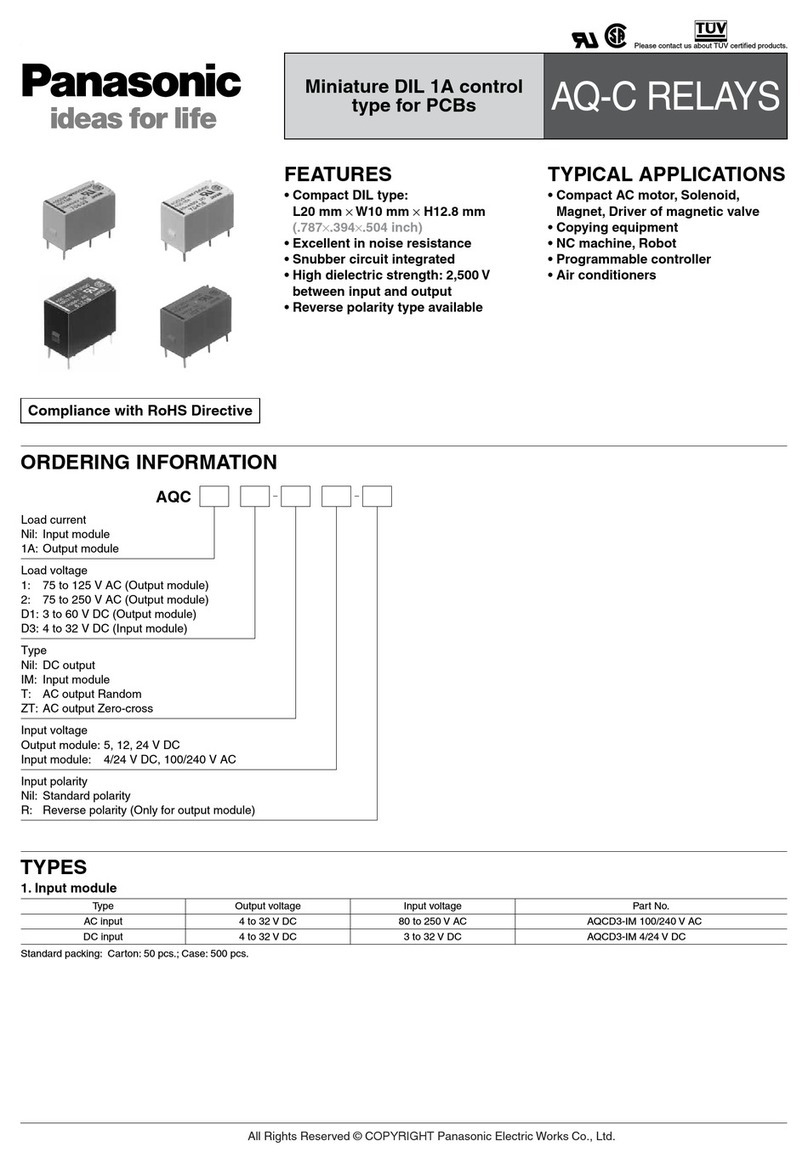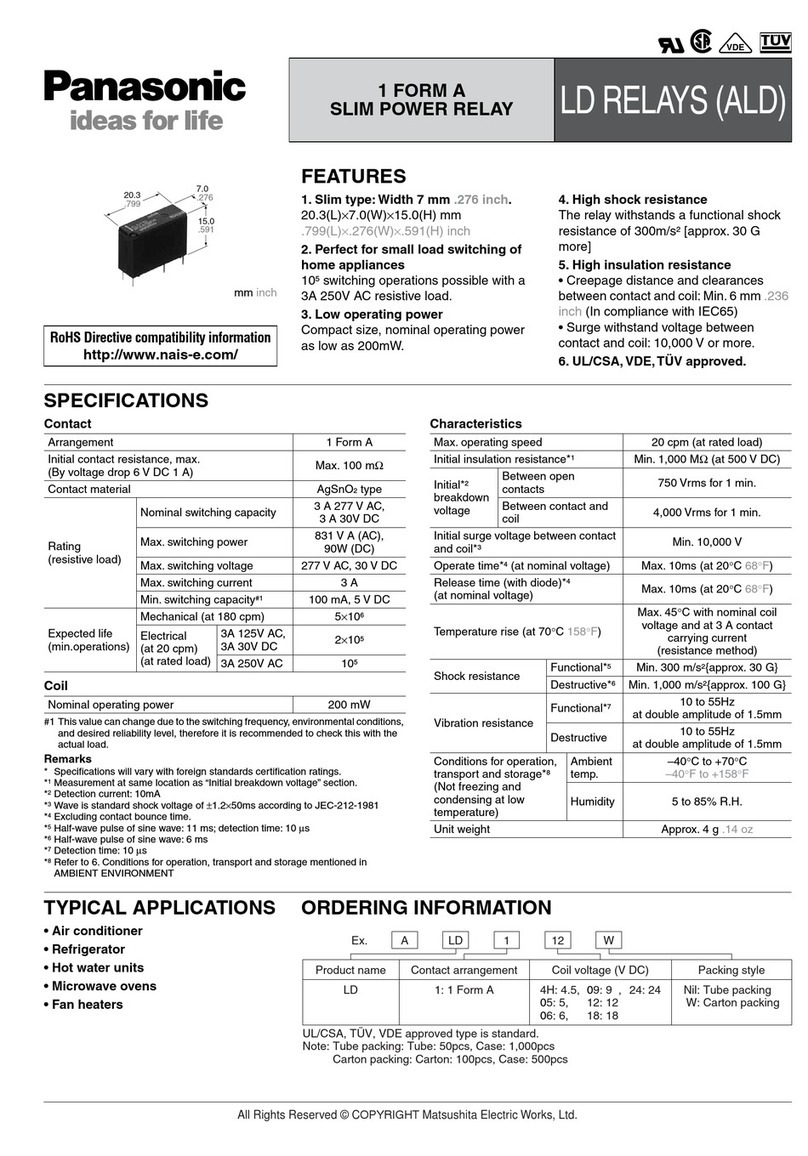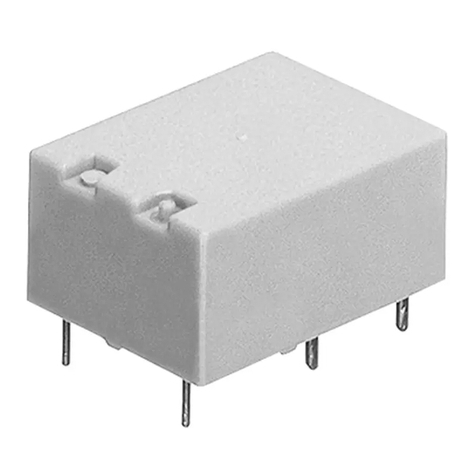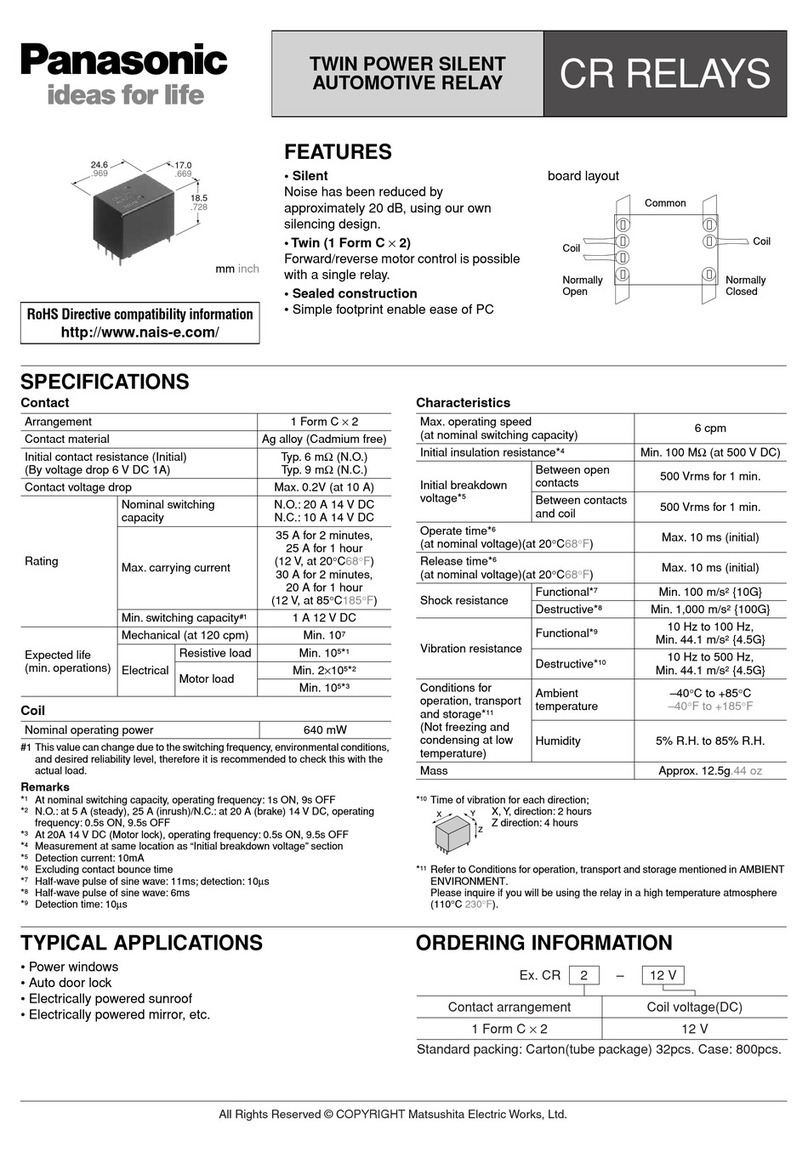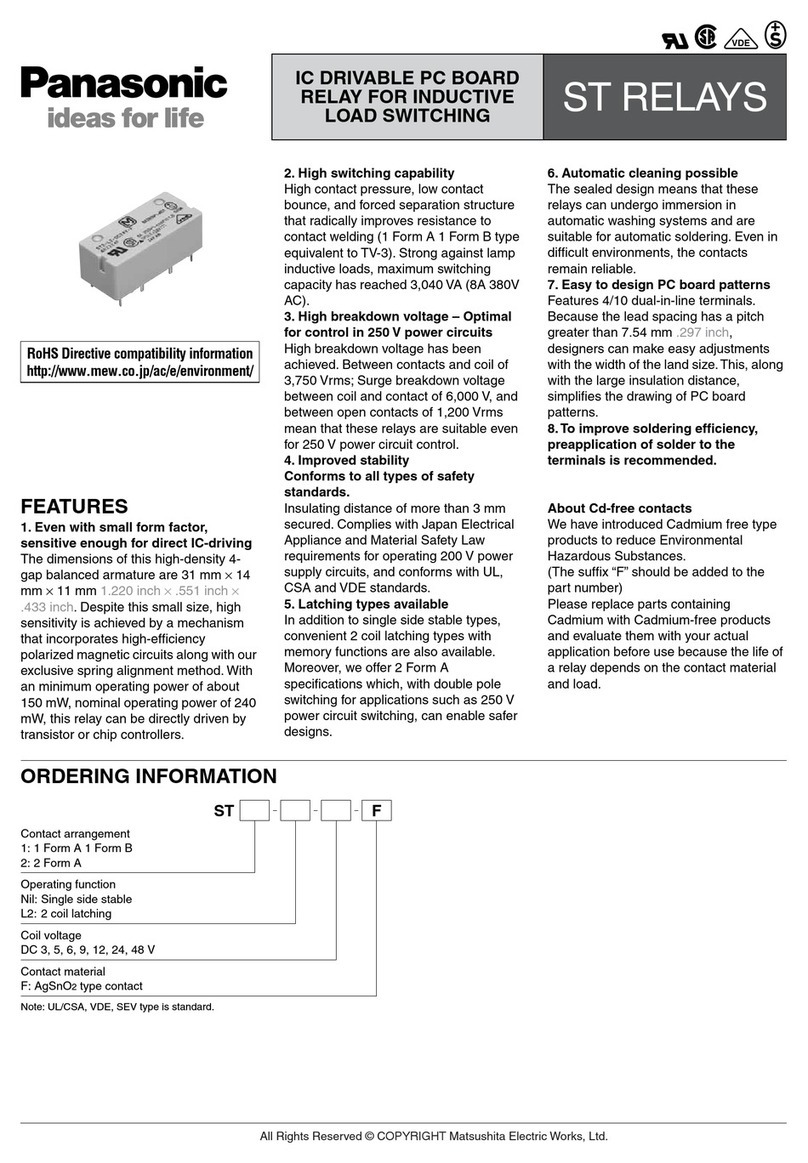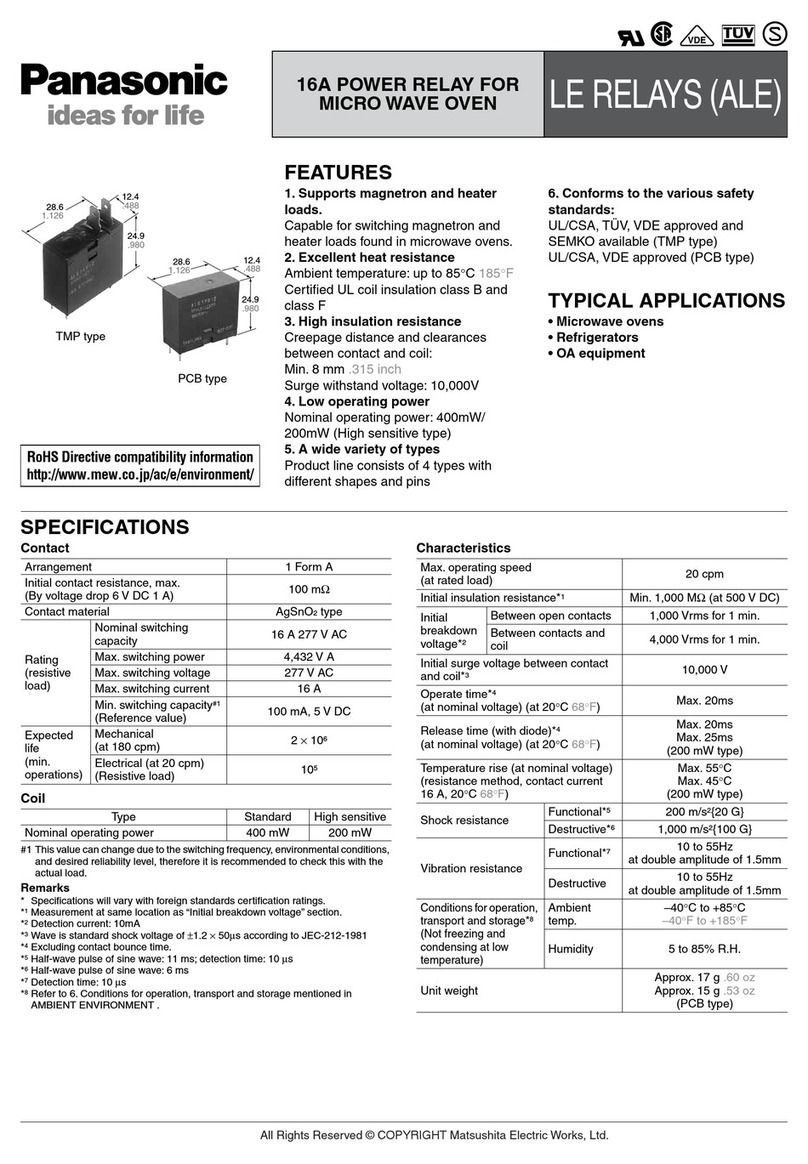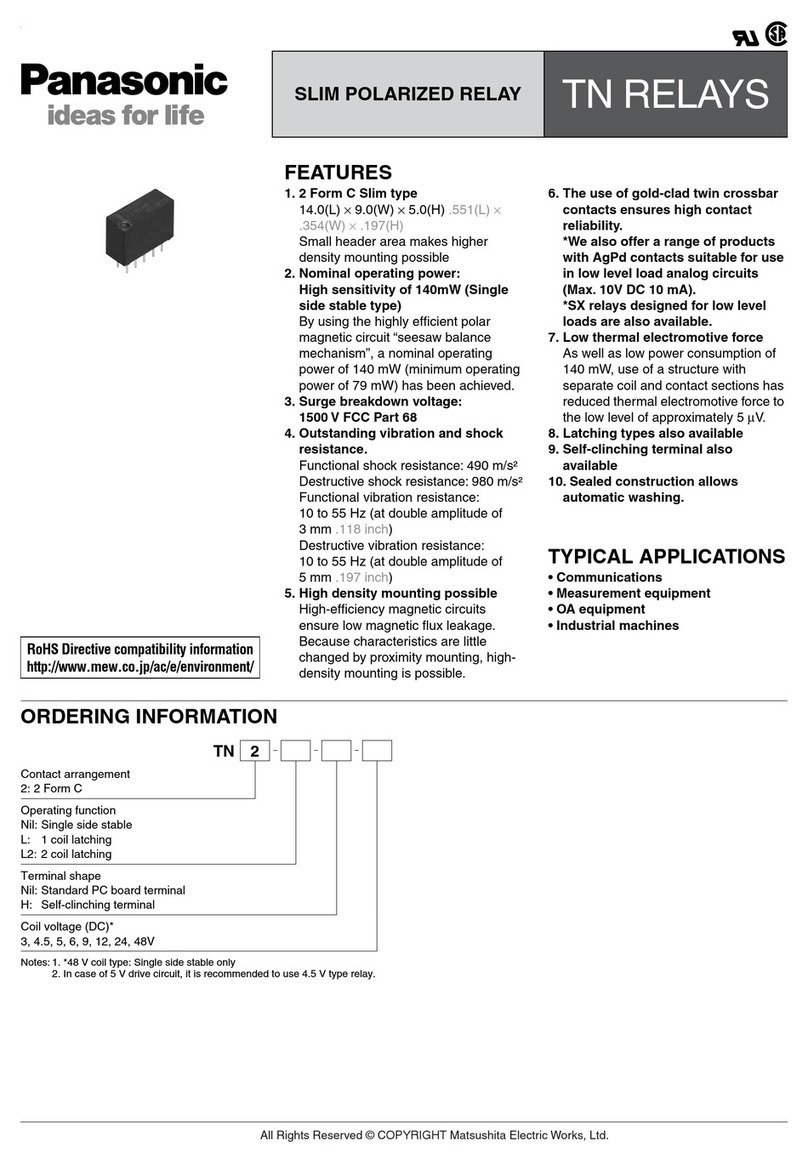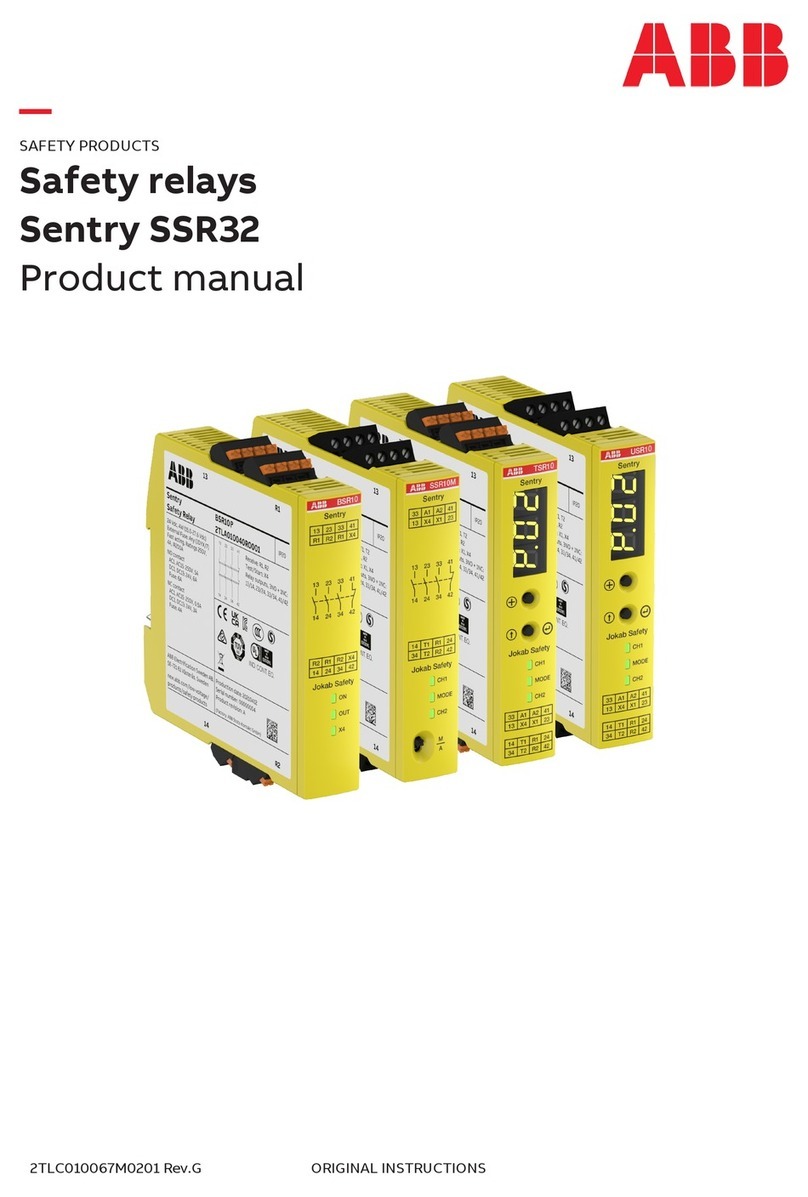EJ (AEJ)
NOTES
For Cautions for Use,see Relay Technical Information.
1. To ensure proper operation, the
voltage applied to the coil should be
the rated operating voltage of the coil.
Also, be aware that the pick-up and
drop-out voltages will fluctuate
depending on the ambient
temperature and operating conditions.
2. Heat, smoke, and even a fire may
occur if the relay is used in conditions
outside of the allowable ranges for the
coil ratings, contact ratings, operating
cycle lifetime, and other
specifications. Therefore, do not use
the relay if these ratings are exceeded.
3. If the relay has been dropped, the
appearance and characteristics
should always be checked before use.
4. This relay is for DC loads. Do not
use it for AC load switching.
5. Make sure that the relay is wired
correctly. Incorrect wiring may cause
unexpected events or the generation
of heat or flames.
6. We recommend you use a surge
absorbing element with a clamp
voltage of 1.5 to 2.0 times the rated
operating voltage for the relay coil
drive circuit as a means for relay coil
surge absorption. Please avoid the
use of diodes, capacitors and
resistors because they lead to
degradation in cut-off performance.
7. Avoid mounting the relay in strong
magnetic fields (near a transformer or
magnet) or close to an object that
radiates heat.
8. Electrical life
This relay is a high-voltage direct-current
switch. In its final breakdown mode, it
may lose the ability to provide the proper
cut-off. Therefore, do not exceed the
indicated switching capacity and life.
(Please treat the relay as a product with
limited life and replace it when
necessary.)
In the event that the relay loses cut-off
ability, there is a possibility that burning
may spread to surrounding parts, so
configure the layout so that the power is
turned off within one second.
9. If the power is turned off and then
immediately on after applying the
rated voltage (current) continuously to
the relay’s coil and contact, the
resistance of the coil will increase due
to a rise in the coil temperature. This
causes the pick-up voltage to rise, and
possibly exceed the rated pick-up
voltage. In these circumstances, take
measures such as reducing the load
current, limiting the duration of
current flow, and applying a coil
voltage higher than the rated
operating voltage (quick start).
10. If you are using an inductive load
(L load) such that L/R > 1 ms, add
surge protection in parallel with the
inductive load. If this is not done, the
electrical life will decrease and cut-off
failure may occur.
11. Be careful that foreign matter and
oils and fats kind doesn’t stick to the
main terminal part because it is likely
to cause a terminal part to give off
unusual heat.
12. Avoid excessive load applied to
the terminal in case of installing such
as a bus bar etc., because it might
give bad influence to the opening and
closing performance.
Tighten each of the screws within the
rated ranges given below.
Main terminal (M6 screw):
6.0N·m to 8.0N·m
Main unit mounting (M5 screw):
2.5N·m to 3.6N·m
13. Usage, transport and storage
conditions
Ambient temperature, humidity, and
atmospheric pressure during usage,
transport, and storage of the relay:
1) Temperature: –40 to +85°C –40 to
+185°F
2) Humidity: 5 to 85% RH
(Avoid freezing and condensation.)
3) Atmospheric pressure: 85 to 106 kPa
Temperature and humidity range for
usage, transport, and storage:
4) Condensation
Condensation forms when there is a
sudden change in temperature under
high temperature and high humidity
conditions. Condensation will cause
deterioration of the relay insulation.
5) Freezing
Condensation or other moisture may
freeze on the relay when the
temperatures is lower than 0°C 32°F.
This causes problems such as sticking of
movable parts or operational time lags.
6) Low temperature, low humidity
environments
The plastic becomes brittle if the relay is
exposed to a low temperature, low
humidity environment for long periods of
time.
